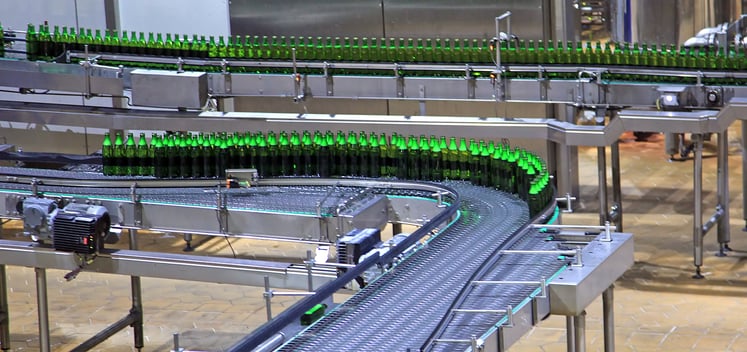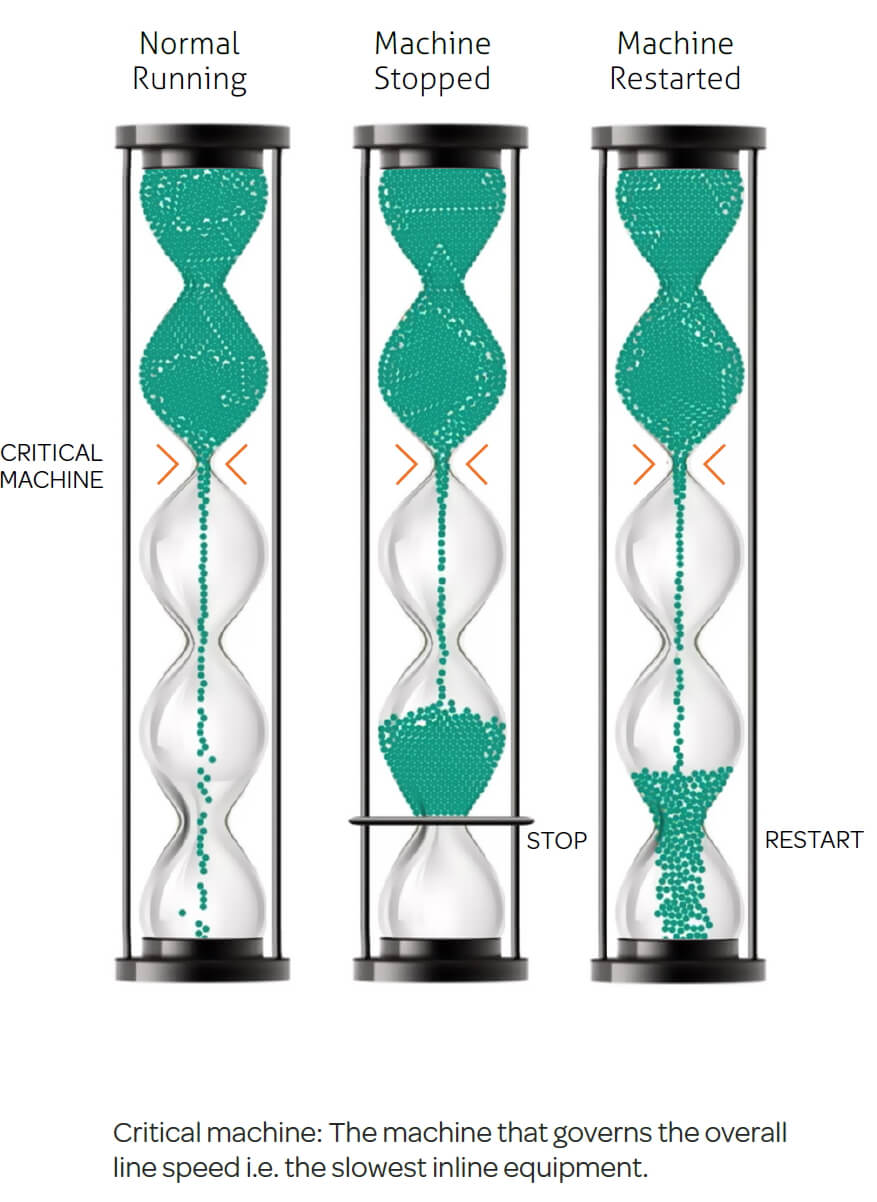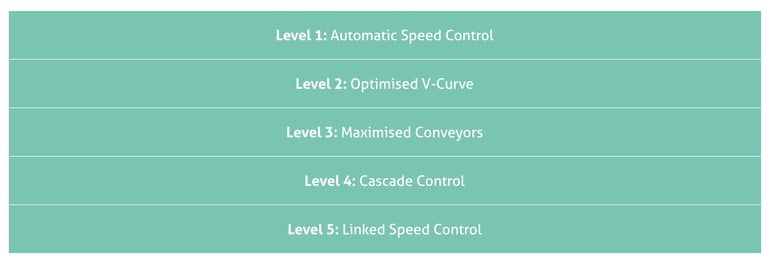Line control has a strong correlation with packaging line performance and OEE. Unfortunately for line performance KPI, the way in which machines are stopped/started in response to line changes is often neglected in practice.
Is this too strong a statement?
Perhaps, but the good news is that ineffective production line balance can be easily remedied with minimal investment. The other good news is that these improvements can increase OEE performance by up to 7%.
Block VS accumulation for continuous flow production
The objective of every line control philosophy is to maximise the line OEE through minimising the effect of minor stops and optimising the speed of each machine.
In practice, line control typically falls into one of several control scenarios. In continuous flow applications, configurations like block and accumulation are the most common.
In some instances, these configurations are set-it-and-forget-it, but it is possible to optimise your production’s stops and while still attaining peak conveyor speed.

Quick reminder:
- Block lines keep machines close together, often on a single conveyor track. Any cessation of movement on one of these ‘blocked’ machines will stop the whole line. This can have a drastic effect on overall performance and productivity.
- Accumulation production lines allow more space between machines. As each piece of equipment can run at varying speeds, there is one machine - the critical machine - that runs slower than the rest. These configurations tend to occupy far more floor space than block lines.
Accumulation production is our focus today, an ideal application for Perfect Flow.
Introducing Perfect Flow and why it should be your goal
In two words, Perfect Flow is way of referencing an ‘ideal state’ of production flow.
Developed originally by a team of operational experts and lean practitioners, Perfect Flow uses a prescribed methodology to reach a state of ideal or ‘perfect’ flow. The primary objective? Minimise the amount of time that the critical machine is not running.
This video explains the concept in greater detail:
In a state of Perfect Flow, machines are equally balanced with automatic controls. Minimal manual intervention is key.
In this state, all equipment matches the critical machine’s speed and if stoppages occur, the line is balanced in such a way as to not impact the bottleneck machine directly.
Each machine sees the same amount of traffic - all of it determined by the critical piece - and have adequate space between them in case any situations arise.
As the line is balanced and optimised, recovering from stops is optimised and the critical machine is restarted almost instantly.

From concept to reality: Perfect Flow through Line Balance Optimisation
To get to this model 'perfect' line, OptimumFX have laid out their steps in their five levels of control, also known as their Line Balance Optimisation methodology.

These practical stages and techniques are tested and likely to make significant improvements to your line.
Once you’ve studied your line, you may be able to see how much it can be bettered.
The changes that come from the five levels of control require minimal investments. We know that it’s hard to exactly duplicate the perfect flow models; by following the 5 levels, you'll come as close as possible to this ideal manufacturing line optimisation scenario.
Want to learn more? Why not sign up for the Line Balance Optimisation (LBO) Crash Course. A 7-part series, our course demonstrates how to implement each of the five levels of control, bringing Perfect Flow and optimisation to your lines.

